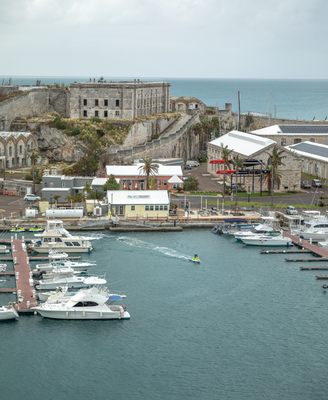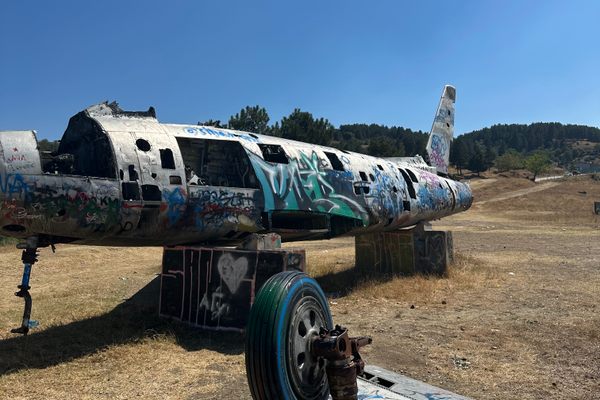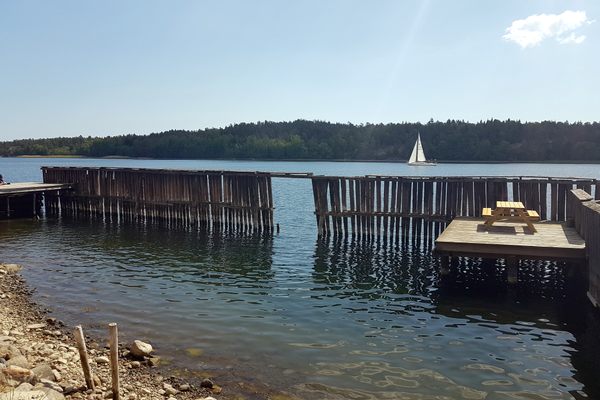About
At the far northwestern end of the island of Bermuda lie the former dockyards of the Royal Navy. Once the most feared fighting fleet ever to sail the ocean, the gradual collapse of the British Empire during the 20th century saw the port’s usefulness fade away, until the 1950s, when the last ship sailed for England. The dockyard was abandoned in 1958.
Following the loss of the American colonies after their defeat in the War of Independence, the island of Bermuda took on an increased importance for Great Britain. Faced with threats to their naval supremacy from both the burgeoning American fleet and marauding French privateers sent by Napoleon to cripple British trade in the New World, Bermuda was selected to become the new headquarters for the North America and West Indies Station of the Royal Navy.
The Royal Navy immediately started pouring money into Ireland Island, the northwestern-most island in the Bermuda chain. Developing over 200 acres, it began building a giant dockyard and port, protected by a system of fortifications. Bermuda was where the immense Royal Navy could refit its ships, and be used as a base to protect its dominance in the Western Atlantic.
The dockyard was built by slaves from the British colonies of the Caribbean, and by thousands of convicts shipped over from England, but principally Ireland: the forced labourers lived in appalling conditions on the sub-tropical colonial outpost. The importance of the new base was shown during the War of 1812, with the blockade of American ports being orchestrated out of Bermuda. When the Royal Navy, carrying an expeditionary force of 5,000 troops and Royal Marines, attacked Washington DC, setting fire to the White House, they sailed from the new Navy Dockyard on Ireland Island. It was from one of the Bermuda ships that prisoner Francis Scott Key wrote the Star Spangled Banner.
The Royal Navy dockyard retained its strategic importance through the two World Wars; the protection of the trans-Atlantic convoys from the U-Boat wolf packs was organized from Bermuda. But devastated by both World Wars, and with its Empire drastically reduced, Britain found its influence in the Western Atlantic usurped by the United States. The once bustling and vital dockyard found itself surplus to requirements, and it was eventually left by the Royal Navy. Its status was reduced from Dockyard to Naval Base in 1951, and the dockyard facilities were mostly removed in 1958 (althouth still serving as a British Navy outpost until 1995). The physical plant was left abandoned to the turbulent weather conditions of the Atlantic after naval units were withdrawn.
After 20 years of decay, a group of volunteers took over the keep, restoring the old fortifications as a home for a new Bermuda Maritime Museum. As tourism to the small colonial island grew, $50 million renovations transformed parts of the old dockyard into a complex of restaurants, shops, and a new dock for cruise ships to accompany the excellent museum. But large parts of the old dockyard, including the old victualing yard, remain untouched, as they were when the Royal Navy left.
The victualing yard was comprised of a square, guarded by cannon and surrounded by warehouses, the former home of the Royal Navy stores. Run by the Board of Commissioners for the Victualing of the Navy, under the auspices of the Admiralty, it would have been stocked with enough provisions to send the fleet out for months at a time. Barrels of ship’s biscuit, salt beef, pease, lime juice, grog, beer, as well as livestock and grains were kept here. Other warehouses were home to Navy ordnance. If a ship of the line limped into port, its sails, masts and rigging ravaged by storms or enemy grapeshot, the yard was the first port of call for the ship's Master. The northern end of the yard was home to the cooperage, where the thousands of barrels used to house the Navy stores were manufactured and maintained.
Whilst some areas of the old dock have benefitted from restoration and have been reclaimed for tourism, large stretches have been left alone. The organization behind the development of the Dockyard, the West End Development Corporation, (WedCo, created by an act of the legislature in 1982) are looking for ways to restore the yard that will retain its historical importance. Andrew Dias, the WedCo General Manager, says “the worst thing that can happen to these structures is that they remain empty. At the same time we have to strike a balance with their history, and that’s not always easy.” Invitations for ideas to restore the rest of the Dockyard were requested in 2015, and proffered suggestions are being evaluated and worked as funds become available. In the meantime, many of the ship yards and lofts of what was once the world’s greatest Navy lie empty.
Related Tags
Know Before You Go
Most cruise ships that visit Bermuda dock in the royal navel dockyard.There is also ferry and bus services available to and from the city of Hamilton
Community Contributors
Added By
Published
April 6, 2015






















































